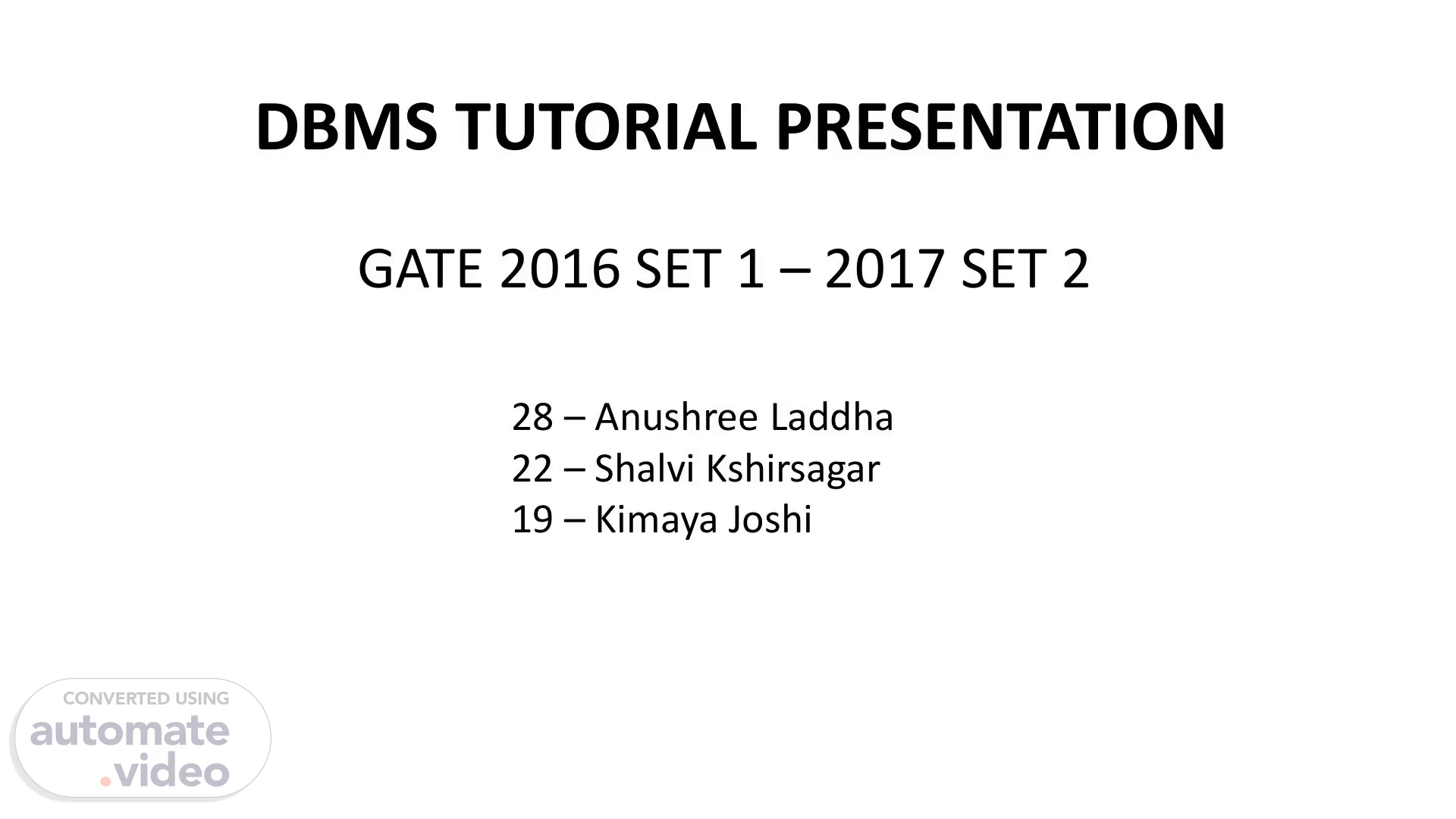
PowerPoint Presentation
Scene 1 (0s)
[Audio] DBMS TUTORIAL PRESENTATION GATE 2016 SET 1 – 2017 SET 2 28 – Anushree Laddha 22 – Shalvi Kshirsagar 19 – Kimaya Joshi.
Scene 2 (21s)
[Audio] Correct Answer: (D) Deadlock-freedom Atomicity - The entire transaction takes place at once or doesn't happen at all. Consistency - The database must be consistent before and after the transaction. Isolation - Multiple transactions occur independently without interference. Durability - The changes of a successful transaction occurs even if the system failure occurs..
Scene 3 (46s)
[Audio] Q2 1. Does not have its own attribute → a direct association between entities without any extra details attached to that connection. 2. Table for R be merged with that of A → merging the relational table for R with that of A indicates a design decision to simplify the database structure by incorporating the relationship information directly into one of the participating entities..
Scene 4 (1m 14s)
[Audio] Two Conditions – 1. Many to one - Many instances of one entity relate to a single instance of another entity. 2. Total Participation - Every instance of the entity must participate in at least one instance of the related relationship. SOLUTION :- c) Relationship R is many to one and the participation of A in R is total.
Scene 5 (1m 40s)
[Audio] QUESTION :. QUESTION :-.
Scene 6 (1m 46s)
[Audio] OPTIONS:CORRECT OPTION :. OPTIONS:- CORRECT OPTION :-.
Scene 7 (1m 52s)
[Audio] SOLUTION:1NF (First Normal Form): 1NF requires that each attribute value in a table is atomic, meaning it cannot be further divided. Both the old and new databases satisfy this requirement because they represent a flat structure where each attribute holds a single value. 2NF (Second Normal Form): 2NF requires that there are no partial dependencies, meaning each non-prime attribute is fully functionally dependent on the entire primary key. In the old database schema, there is a partial dependency present: (VOLUME, NUMBER) → YEAR. This means the YEAR attribute is dependent on only part of the primary key. In the new schema, this dependency has been resolved by moving the YEAR attribute to a separate table with its own primary key, thus eliminating the partial dependency. Now, (VOLUME, NUMBER) → YEAR holds, but there are no partial dependencies..
Scene 8 (2m 52s)
[Audio] 3NF (Third Normal Form): 3NF requires that there are no transitive dependencies, meaning nonprime attributes are not dependent on other non-prime attributes. Both the old and new schemas do not exhibit transitive dependencies since all the functional dependencies mentioned are between the primary key and other attributes. BCNF (Boyce-Codd Normal Form): BCNF requires that every determinant is a candidate key. Both the old and new databases satisfy BCNF because all functional dependencies are determined by candidate keys. In summary, both the old and new databases satisfy 1NF, 3NF, and BCNF, the new database, therefore 2NF is the weakest form..